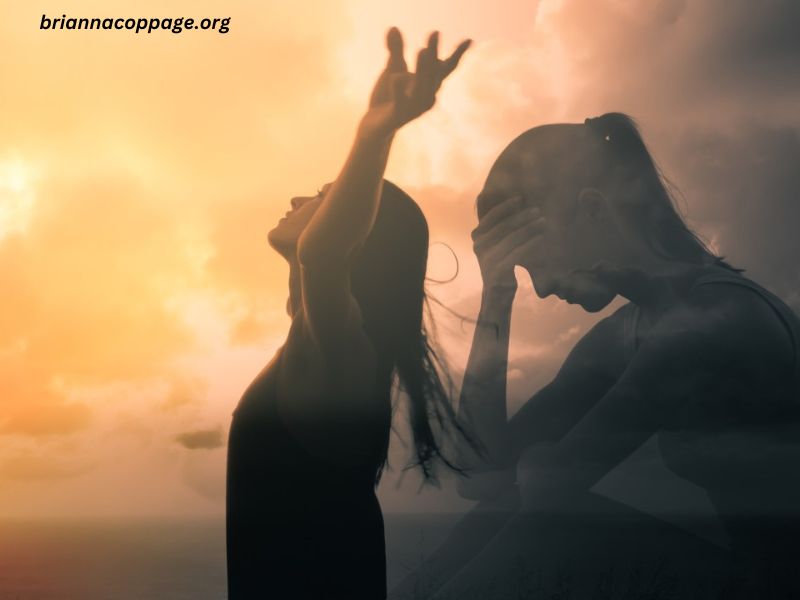The relationship between activity and emotions such as joy and sadness has been a subject of interest for psychologists, researchers, and even philosophers for centuries. Our actions, interactions, and behaviors are all deeply intertwined with our emotional experiences. When we explore the connection between activity and emotions like joy and sadness, we uncover insights into how our daily activities can directly influence our mood and overall emotional well-being.
In this article, we will examine the activity relationship to joy and sadness, looking at how different types of activities, whether physical, social, or mental, can impact our emotions and contribute to the overall experience of joy or sadness. Understanding this relationship can guide individuals toward making better lifestyle choices and ultimately help enhance emotional well-being.
Understanding the Basics: Joy and Sadness
Before delving into the specifics of how activities relate to joy and sadness, it’s important to understand what joy and sadness are in the context of human emotions.
What is Joy?
Joy is a positive emotional state characterized by feelings of happiness, contentment, and well-being. It can be fleeting, such as the excitement you feel when receiving good news, or more enduring, like the happiness experienced from nurturing fulfilling relationships. Joy is often linked to activities that provide a sense of accomplishment, connection, or pleasure. Engaging in meaningful or enjoyable activities can trigger the release of feel-good chemicals in the brain, such as dopamine and serotonin, further enhancing feelings of happiness.
What is Sadness?
On the other hand, sadness is a negative emotional state that typically arises when we experience loss, disappointment, or an unmet need. It can be a temporary reaction or a more prolonged emotional state, depending on the circumstances. Sadness can feel heavy and draining, often leaving individuals feeling less motivated or engaged in activities. However, sadness also serves an important emotional function—helping individuals process difficult experiences, fostering empathy, and encouraging introspection.
How Does Activity Influence Joy and Sadness?
The connection between activity and emotion is more than just theoretical. Multiple studies and research have shown that the activities people engage in can have a profound impact on their emotional state. From physical exercises to social interactions and mental engagements, the type of activity a person chooses can either elevate their mood or deepen their sadness.
1. Physical Activities and Their Influence on Emotions
Physical activities, particularly those that involve exercise or movement, are strongly linked to increased feelings of joy and decreased feelings of sadness. When we engage in exercise, the brain releases endorphins—often referred to as “feel-good hormones.” These hormones promote feelings of euphoria, relaxation, and satisfaction.
How Physical Activity Promotes Joy:
- Endorphin Release: Physical exercises, such as running, swimming, or dancing, can trigger the release of endorphins, which are chemicals that promote feelings of joy and well-being.
- Improved Sleep: Regular physical activity helps regulate sleep patterns, leading to better rest and overall mood improvement.
- Stress Relief: Physical exercise helps reduce the level of cortisol (the stress hormone) in the body, promoting relaxation and a sense of calm.
- Increased Confidence: Achieving fitness goals or feeling physically strong often contributes to a boost in self-esteem and positive emotions.
How Physical Activity Reduces Sadness:
- Breaking the Cycle of Negative Thoughts: Exercise helps interrupt rumination, a common pattern in sadness, where individuals focus excessively on negative thoughts and experiences.
- Social Engagement: Group sports or fitness classes can provide social interaction, which can be a powerful antidote to loneliness and sadness.
- Distraction from Grief or Pain: Physical activities serve as a helpful distraction from emotional pain, offering temporary relief and giving the individual a break from their negative feelings.
2. Social Activities and Their Emotional Impact
Humans are inherently social creatures. Our interactions with others have a profound influence on our emotional well-being. Positive social activities, such as spending time with loved ones, participating in group events, or engaging in meaningful conversations, can increase joy. Conversely, social isolation or negative social experiences can contribute to sadness.
How Social Activity Promotes Joy:
- Connection and Support: Being around supportive friends and family can lift our spirits and create a sense of belonging, which is a key component of happiness.
- Shared Experiences: Enjoying activities together, such as dining, traveling, or simply chatting, can create lasting memories that bring joy.
- Affection and Validation: Physical touch, such as hugs, or verbal affirmations can strengthen social bonds and increase feelings of joy.
How Social Activity Reduces Sadness:
- Combatting Loneliness: Spending time with others is a powerful antidote to loneliness, which is often linked to sadness and depression.
- Emotional Support: Sharing difficult emotions with trusted individuals allows for emotional relief, understanding, and validation, which can help reduce sadness.
- Distraction from Negative Thoughts: Engaging in lighthearted conversation or group activities provides a break from negative emotional patterns associated with sadness.
3. Mental and Cognitive Activities: Engagement and Emotional Balance
Mental activities, such as reading, problem-solving, and engaging in creative hobbies, also play a significant role in regulating joy and sadness. Activities that challenge the brain and promote cognitive engagement can positively affect mood.
How Mental Activities Promote Joy:
- Flow State: Engaging in activities that fully absorb our attention, such as painting, writing, or solving puzzles, can create a “flow” state—where time seems to disappear, and the individual experiences a deep sense of satisfaction and joy.
- Sense of Accomplishment: Completing challenging mental tasks or projects, like finishing a book or solving a difficult puzzle, can foster feelings of achievement and joy.
- Creative Expression: Engaging in artistic or creative endeavors can serve as an emotional outlet, providing relief from stress and sadness.
How Mental Activities Reduce Sadness:
- Distraction from Pain: Mental activities, like reading or watching a show, can distract the mind from sadness and provide an escape from negative thoughts.
- Building Coping Skills: Engaging in mental exercises such as meditation or mindfulness can help individuals process sadness, improve emotional regulation, and develop resilience.
- Increased Self-Efficacy: Successfully engaging in challenging cognitive activities increases self-confidence, which can buffer against feelings of helplessness or sadness.
4. Routine and Structure: How Consistency Shapes Emotional Health
Daily routines and structured activities help provide a sense of control, stability, and purpose—especially during challenging times. Creating a balance between engaging in joy-inducing activities and managing responsibilities can help individuals maintain a healthy emotional state.
How Routine Promotes Joy:
- Predictability: Having a predictable daily structure allows for moments of relaxation and enjoyment, reducing the stress of uncertainty.
- Productivity: Consistent engagement in work or personal goals brings a sense of accomplishment and fulfillment, contributing to overall happiness.
- Balance: Structuring one’s day to include activities that nurture both physical and emotional well-being helps ensure a balanced and joyful lifestyle.
How Routine Reduces Sadness:
- Preventing Overwhelm: A structured routine can help prevent feelings of being overwhelmed, especially during difficult times.
- Grounding Effect: Maintaining a sense of normalcy through routine activities provides a grounding effect, offering comfort during sadness or emotional upheaval.
Conclusion: Nurturing the Activity-Emotion Connection
The relationship between activity and emotions like joy and sadness is intricate and dynamic. Our activities—whether physical, social, or mental—are powerful tools for enhancing joy and mitigating sadness. Engaging in activities that promote movement, social interaction, creativity, and mental stimulation can boost mood, reduce feelings of sadness, and improve overall emotional well-being.
Ultimately, understanding how activity relationship to joy and sadness works can empower individuals to make intentional choices about how they spend their time. Whether through exercise, engaging with loved ones, immersing oneself in hobbies, or simply maintaining a balanced routine, the activities we choose shape our emotional lives. By fostering positive activities that promote joy and diminish sadness, individuals can enhance their emotional resilience and well-being, leading to a more fulfilling and balanced life.






